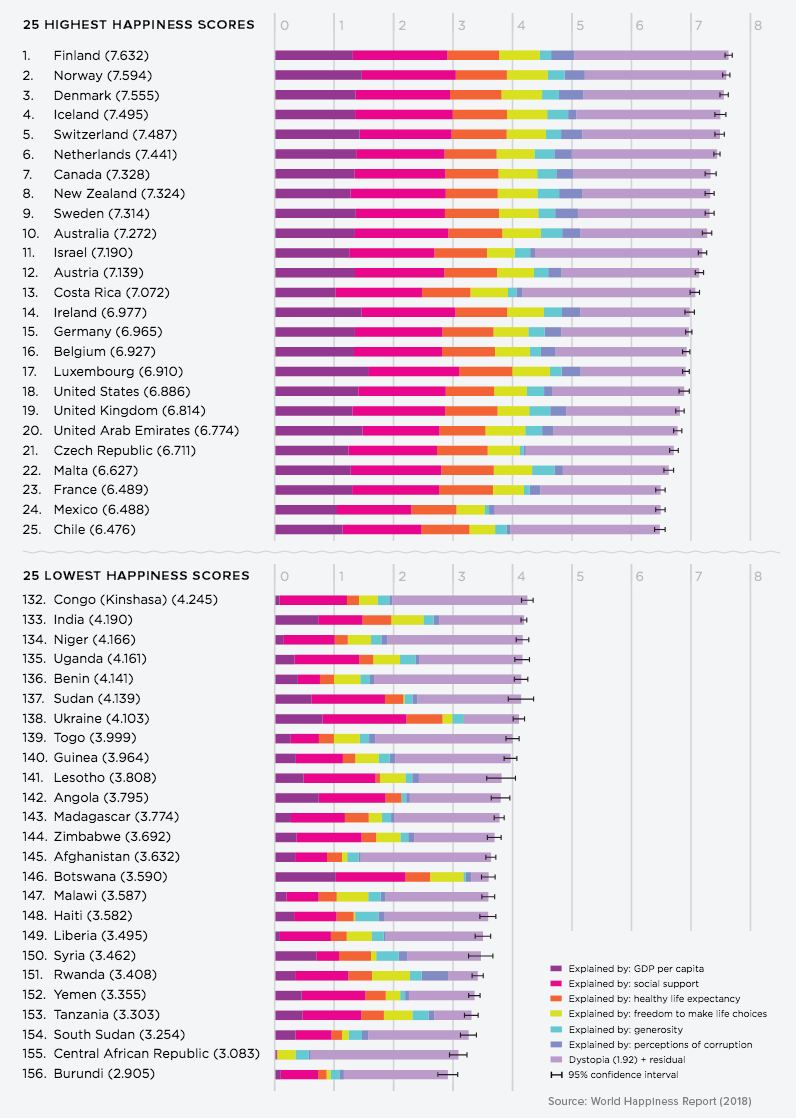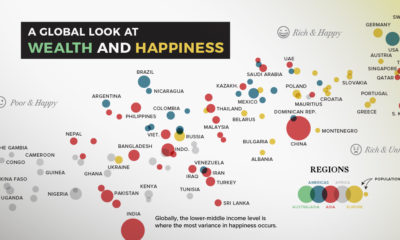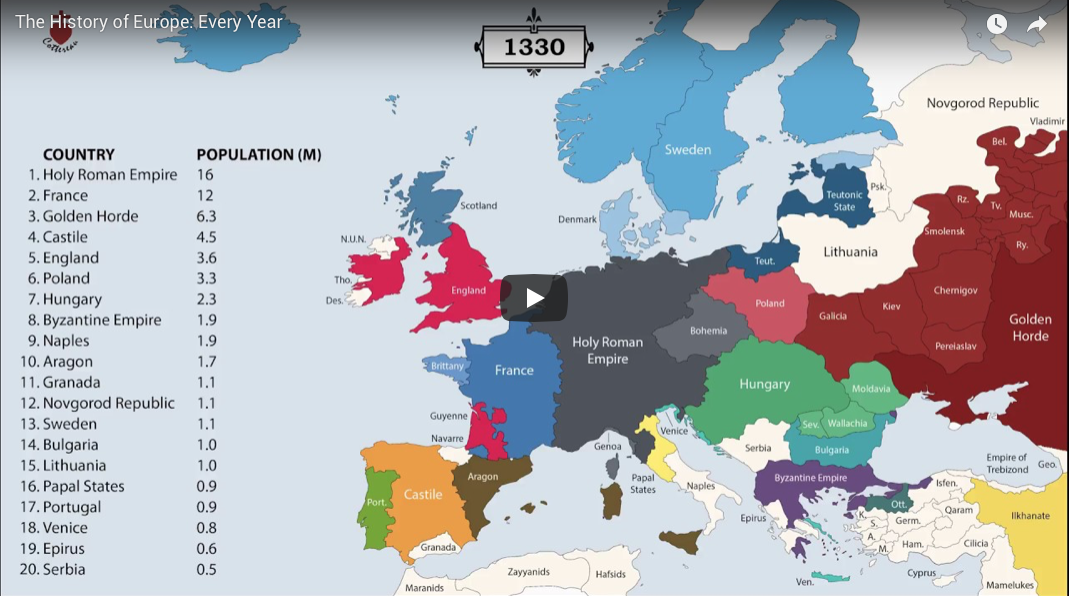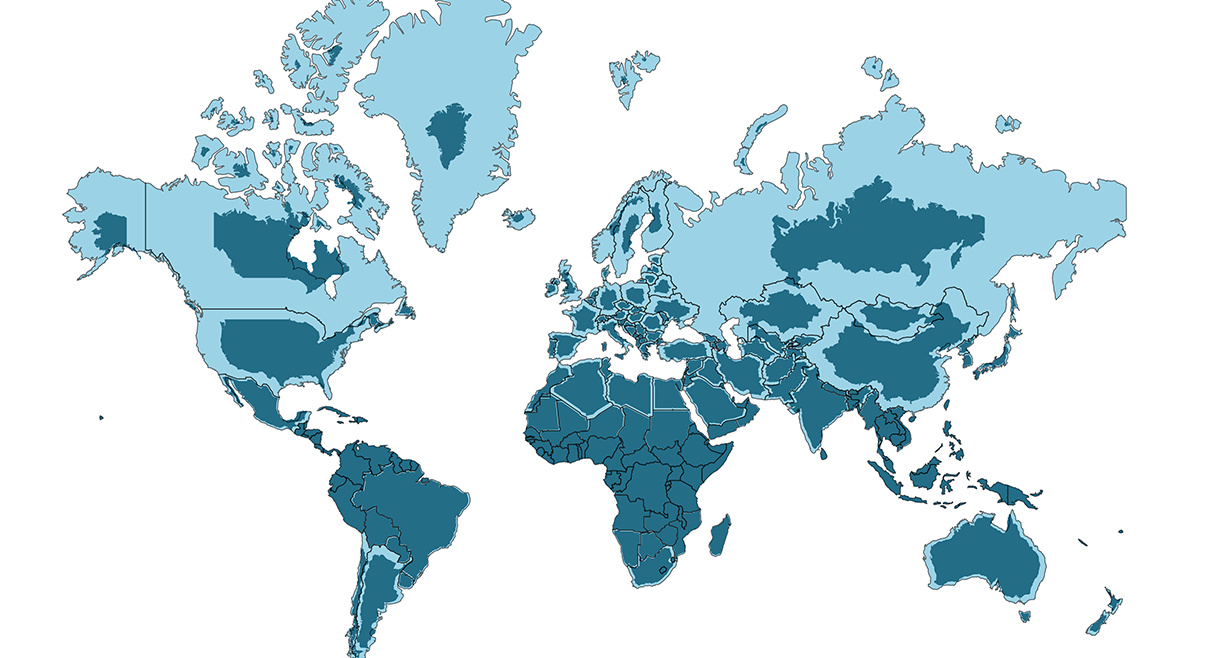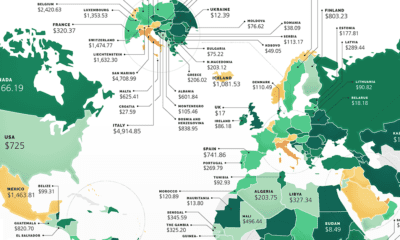While money can be a crucial indicator of happiness at lower income levels, studies have found that as incomes rise, money becomes a less important part of the overall happiness equation. In fact, researchers see happiness as a complex measure that involves many variables outside of material wealth, including social support, freedom, and health.
Measuring Global Happiness
Today’s chart uses data from the World Happiness Report 2018 to measure and understand which countries report feeling the most and least happy.
What Contributes to Happiness?
The six key variables used by researchers in this report on global happiness include: While average income and life expectancy definitely carry their weight in explaining happiness levels, what’s more interesting are the Gallup World Poll (GWP) questions about the other, more subjective variables.
Social support “If you were in trouble, do you have relatives or friends you can count on to help you whenever you need them?” Freedom to make life choices “Are you satisfied or dissatisfied with your freedom to choose what you do with your life?” Generosity “Have you donated money to a charity in the past month?” Perceptions of corruption “Is corruption widespread throughout the government or not?” “Is corruption widespread within businesses or not?”
How Happy is the World?
The top tier of happiest countries happen to be Nordic, with Finland, Norway, Denmark, and Iceland making it into the top five. Aside from having a common geographic location, these countries are also well-known for their social safety nets, using a high tax burden to fund government services such as education and healthcare. A surprising entry near the top of the list might be Costa Rica. It’s the happiest country in the Latin American region, despite persisting income inequality issues. Although it has a lower GDP per capita than other high-ranking entries, the country has more than made up for it through social support; Costa Rica has invested significantly in education and health as a proportion of GDP, and the nation is also known for housing a culture that forms solid social networks of friends, families and neighborhoods. On the other hand, 18 of the least happy countries are concentrated on the African continent. GDP per capita varies intensely among the bottom countries, and many report a lack of freedom overall. A silver lining is that social support is relatively stable, and there have been steady improvements over time. Finally, the aftermath of the 2008 financial crisis has had a ripple effect on global happiness. The report demonstrates where the most and fewest advances have been made.
Togo Happiness is on the upswing, as the West African nation climbs 17 places to demonstrate the most improvement. Venezuela Meanwhile, the South American country plummeted even further, in part from socio-political changes and dramatic hyperinflation.
Where does your country fare on this scale? ― Aristotle on Even while political regimes across these countries have changed over time, they’ve largely followed a few different types of governance. Today, every country can ultimately be classified into just nine broad forms of government systems. This map by Truman Du uses information from Wikipedia to map the government systems that rule the world today.
Countries By Type of Government
It’s important to note that this map charts government systems according to each country’s legal framework. Many countries have constitutions stating their de jure or legally recognized system of government, but their de facto or realized form of governance may be quite different. Here is a list of the stated government system of UN member states and observers as of January 2023: Let’s take a closer look at some of these systems.
Monarchies
Brought back into the spotlight after the death of Queen Elizabeth II of England in September 2022, this form of government has a single ruler. They carry titles from king and queen to sultan or emperor, and their government systems can be further divided into three modern types: constitutional, semi-constitutional, and absolute. A constitutional monarchy sees the monarch act as head of state within the parameters of a constitution, giving them little to no real power. For example, King Charles III is the head of 15 Commonwealth nations including Canada and Australia. However, each has their own head of government. On the other hand, a semi-constitutional monarchy lets the monarch or ruling royal family retain substantial political powers, as is the case in Jordan and Morocco. However, their monarchs still rule the country according to a democratic constitution and in concert with other institutions. Finally, an absolute monarchy is most like the monarchies of old, where the ruler has full power over governance, with modern examples including Saudi Arabia and Vatican City.
Republics
Unlike monarchies, the people hold the power in a republic government system, directly electing representatives to form government. Again, there are multiple types of modern republic governments: presidential, semi-presidential, and parliamentary. The presidential republic could be considered a direct progression from monarchies. This system has a strong and independent chief executive with extensive powers when it comes to domestic affairs and foreign policy. An example of this is the United States, where the President is both the head of state and the head of government. In a semi-presidential republic, the president is the head of state and has some executive powers that are independent of the legislature. However, the prime minister (or chancellor or equivalent title) is the head of government, responsible to the legislature along with the cabinet. Russia is a classic example of this type of government. The last type of republic system is parliamentary. In this system, the president is a figurehead, while the head of government holds real power and is validated by and accountable to the parliament. This type of system can be seen in Germany, Italy, and India and is akin to constitutional monarchies. It’s also important to point out that some parliamentary republic systems operate slightly differently. For example in South Africa, the president is both the head of state and government, but is elected directly by the legislature. This leaves them (and their ministries) potentially subject to parliamentary confidence.
One-Party State
Many of the systems above involve multiple political parties vying to rule and govern their respective countries. In a one-party state, also called a single-party state or single-party system, only one political party has the right to form government. All other political parties are either outlawed or only allowed limited participation in elections. In this system, a country’s head of state and head of government can be executive or ceremonial but political power is constitutionally linked to a single political movement. China is the most well-known example of this government system, with the General Secretary of the Communist Party of China ruling as the de facto leader since 1989.
Provisional
The final form of government is a provisional government formed as an interim or transitional government. In this system, an emergency governmental body is created to manage political transitions after the collapse of a government, or when a new state is formed. Often these evolve into fully constitutionalized systems, but sometimes they hold power for longer than expected. Some examples of countries that are considered provisional include Libya, Burkina Faso, and Chad.
